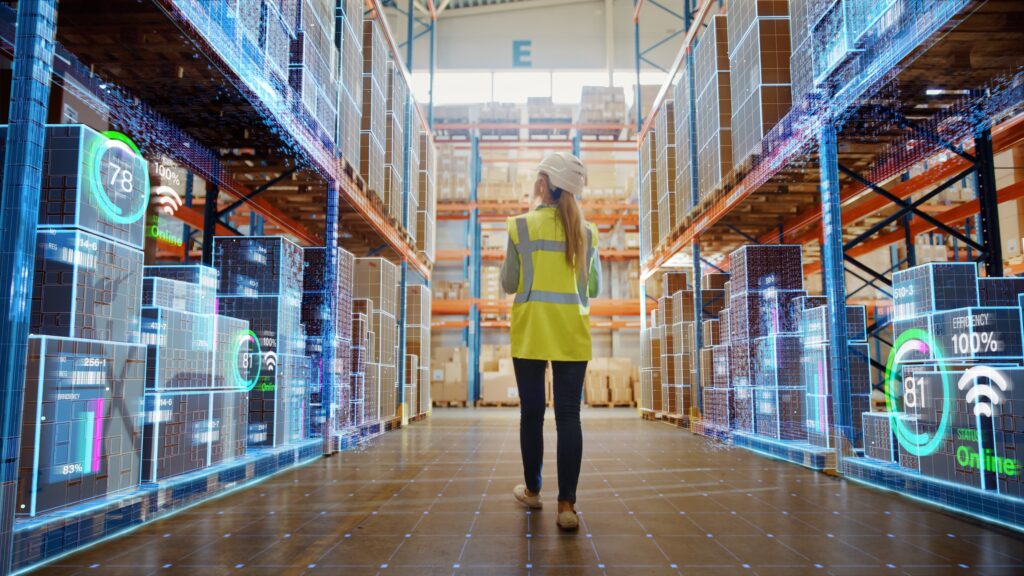58% of Warehouse Leaders Plan to Deploy RFID by 2028
27th September 2023

Zebra Technologies Corporation today released the findings of its 2023 Global Warehousing Study, which confirmed 58% of warehouse decision-makers plan to deploy radio frequency identification (RFID) technology by 2028 which will help increase inventory visibility and reduce out-of-stocks.
Over the next five years, a majority of warehouse decision-makers plan to deploy fixed, passive or handheld RFID readers and fixed industrial scanning solutions that can better track assets, workers and goods throughout the warehouse environment. This year marks the 50th anniversary of the invention of RFID which has become a problem-solving tool for front-line workers in warehouses and other industries.
Accelerating Modernization to Manage Returns
The survey showed 74% of European warehouse decision-makers (73% globally) have or will be accelerating timelines of modernization projects. This should help with returns management which climbed to the top operational challenge cited by nearly half of warehouse decision-makers surveyed—an increase of 10 percentage points year-over-year. For Europe that figure is 43%, a 12 percentage point increase year-over-year.
“The significant growth of returns aligns with explosive e-fulfilment growth over the last several years, and it is a mandate for change across every part of the supply chain,” said Andre Luecht, Global Strategy Lead for Transportation, Logistics and Warehouse, Zebra Technologies. “This means warehouse leaders must modernize their operations with technology solutions to handle returns and increase agility, inventory visibility and demand forecasting in order to improve efficiency and make better decisions in real time.”
A majority of warehouse decision-makers (76%) say they are under pressure to improve performance while adjusting to shifting consumer ecommerce demands. Inaccurate inventory and out-of-stocks continue to significantly challenge productivity according to nearly 80% of warehouse associates and decision-makers. In fact, both groups — 82% of associates and 76% of decision-makers — acknowledge they need better inventory management tools to achieve better accuracy and determine availability. And a significant 94% of European decision-makers (91% globally) are addressing this need, citing plans to invest in technology to increase visibility across the supply chain by 2028.
Optimizing Operations to Increase Visibility
Warehouse decision-makers are also augmenting their front-line workers by automating their warehouses to ultimately optimize their operations and increase their inventory visibility. According to a recent study by Interact Analysis, despite a recent slowdown in demand for automation projects (in part due to a reduction in warehousing construction), this demand is expected to return to growth in 2024.
The Zebra study found that 69% of warehouse decision-makers already have or are planning to automate workflows by 2024 to support warehouse associates and shift them toward more customer-centric, high-value tasks. Over half of warehouse decision-makers believe automation increases worker efficiency and productivity by reducing manual picking, order errors and cycle time. Meanwhile, eight in ten warehouse associates agree using more technology and automation helps them meet or exceed productivity goals.
Complementing the rise in productivity, eight in ten warehouse associates surveyed also feel more valued when their employers provide them with technology and automation tools to help them work. Similarly, 88% of warehouse decision-makers say adding warehouse technologies, including devices and robotics, attract and retain employees which is extremely important during labour shortages. More than half of the surveyed decision-makers plan to implement machine learning (52%) and predictive analytics (59%) software solutions in their facilities by 2028.
Prioritizing Sustainability in Decision-Making
Warehouse decision-makers are choosing solutions based on their ability to help them build sustainable operations, driven largely by regulations, energy costs or shortages along with customer, worker and investor expectations. For example, 78% of European warehouse decision-makers (77% globally) are focused on reducing emissions and waste while eight in ten warehouse decision-makers say it’s important their warehouse technology solutions maximize battery life.
Other sustainable elements decision-makers prioritize today include ensuring accurate mobile device swap-out time, connecting to energy monitoring software to maximize efficiency, offering buy-back and certified refurbishment/circular economy programs, and the use of reusable and recyclable materials. Beyond their own operations, 81% of warehouse decision-makers also say it’s important that technology vendors have sustainability measures in place for running their businesses.

